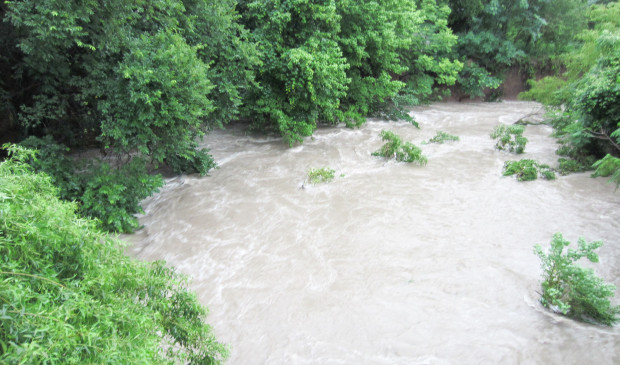Fire department touts improved flood performance
Thursday, December 10, 2015 by
Jack Craver Larry Jantzen, chief of special operations with the Austin Fire Department, told members of the Public Safety Commission on Monday that the department was able to respond more quickly and effectively to the Oct. 30 floods because of improvements it had made since the floods that struck Austin on Halloween of 2013.
For starters, the special operations battalion dramatically increased its inventory of water-rescue equipment. It added three Zodiac swift-water rescue boats, bringing its total to seven. Two were purchased by the department, while one came from the Texas Education Extension Service affiliated with Texas A&M. It also increased the number of tow platforms from two to five; evacuation boats from one to six; and support vehicles used as tow platforms from two to four.
Additionally, the battalion invested $19,500 in a range of smaller items such as flotation devices, helmets, lighting and “dry suits,” which keep rescuers warmer than traditional “wet suits” and allow them to enter water in a wider range of temperatures.
The department also changed its staffing standards in the intervening two years to better respond to floods. It raised its minimum number of swift-water rescue technicians on duty from six to 18. And while only 45 members of the 135-member battalion were certified as swift-water rescue technicians in 2013, the department has since required every member of the group to be certified, a goal that Jantzen said is 90 percent complete. Similarly, through increased training, the department now has at least five boat operators on duty at all times, in contrast to 2013, when there was no minimum staffing in that regard.
The battalion has decentralized its operations, dispersing its swift-water rescue resources across five stations instead of relying primarily on the downtown station at Fifth and Trinity streets.
Firefighters made use of 10 city street and bridge dump trucks during the recent floods to evacuate people when water was too shallow to use boats. Jantzen said that he’d been in contact with brass at the National Fire Academy and the Emergency Management Institute who are interested in exploring the dump truck strategy.
“They’re very intrigued nationally about using this as a standard operating procedure for other departments around the nation,” he said.
The department also appeared to have caught a number of lucky breaks in terms of the timing of this year’s floods. Although the floods were largely unanticipated, there were already twice as many dispatchers as usual at the dispatch center – 12 compared to six – because of an unrelated training event. All three battalion chiefs were similarly at a meeting when the storm hit.
“So we had double staffing, already there,” said Jantzen.
Perhaps more importantly, the department had developed a simplified “triage tree” in conjunction with the police department. When the lines for fire dispatchers got too backed up, callers were sent to police dispatchers, who assessed the severity of each emergency before putting the caller back in the fire queue with a priority level assigned.
“So there weren’t just calls, up to 100, in the queue,” explained Jantzen. “The calls in the queue were prioritized as level 1, 2, 3 or 4.”
As a result, those seeking rescue during the floods got in touch with services faster than they would have two years ago. Of the 419 calls AFD fielded during this year’s floods, 68 percent were answered in the first 15 seconds, whereas in 2013 only 50 percent of the 489 calls were. Also, 81 percent of the calls this year were answered within at least 40 seconds, compared to 62 percent in 2013.
In total, the department performed 170 rescues that resulted in the evacuation of more than 300 residents.
Photo by Steve made available through a Creative Commons license.
You're a community leader
And we’re honored you look to us for serious, in-depth news. You know a strong community needs local and dedicated watchdog reporting. We’re here for you and that won’t change. Now will you take the powerful next step and support our nonprofit news organization?











